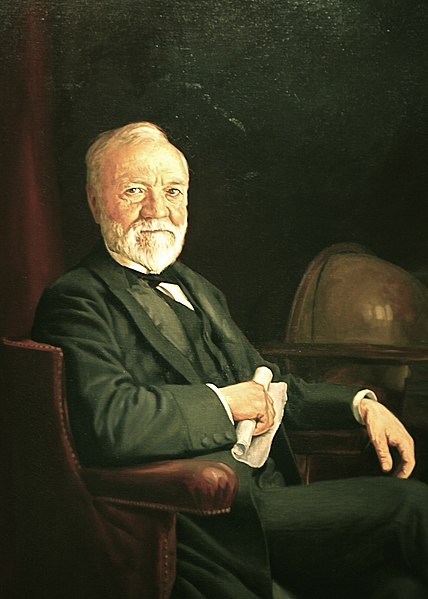A Carnegie library is a library built with money donated by Scottish-American businessman and philanthropist Andrew Carnegie. A total of 2,509 Carnegie libraries were built between 1883 and 1929, including some belonging to public and university library systems. 1,689 were built in the United States, 660 in the United Kingdom and Ireland, 125 in Canada, and 25 others in Australia, South Africa, New Zealand, Serbia, Belgium, France, the Caribbean, Mauritius, Malaysia, and Fiji.
Andrew Carnegie, c. 1905, National Portrait Gallery
Plaque at the Taunton Public Library in Massachusetts
The first Carnegie library, in Dunfermline, Scotland
Carnegie Free Library of Braddock in Braddock, Pennsylvania, built in 1888, was the first Carnegie Library in the United States to open (1889) and the first of four to be fully endowed.
Andrew Carnegie was a Scottish-American industrialist and philanthropist. Carnegie led the expansion of the American steel industry in the late 19th century and became one of the richest Americans in history. He became a leading philanthropist in the United States, Great Britain, and the British Empire. During the last 18 years of his life, he gave away around $350 million, almost 90 percent of his fortune, to charities, foundations and universities. His 1889 article proclaiming "The Gospel of Wealth" called on the rich to use their wealth to improve society, expressed support for progressive taxation and an estate tax, and stimulated a wave of philanthropy.
Carnegie in 1913
Carnegie as he appears in the National Portrait Gallery in Washington, D.C.
Birthplace of Andrew Carnegie in Dunfermline, Scotland
Carnegie, age 16, with younger brother Thomas, c. 1851







